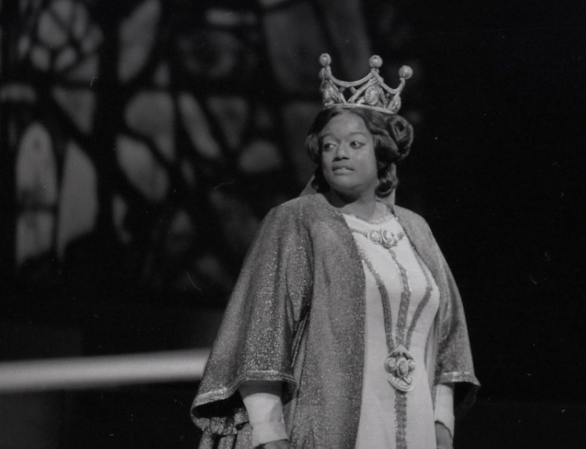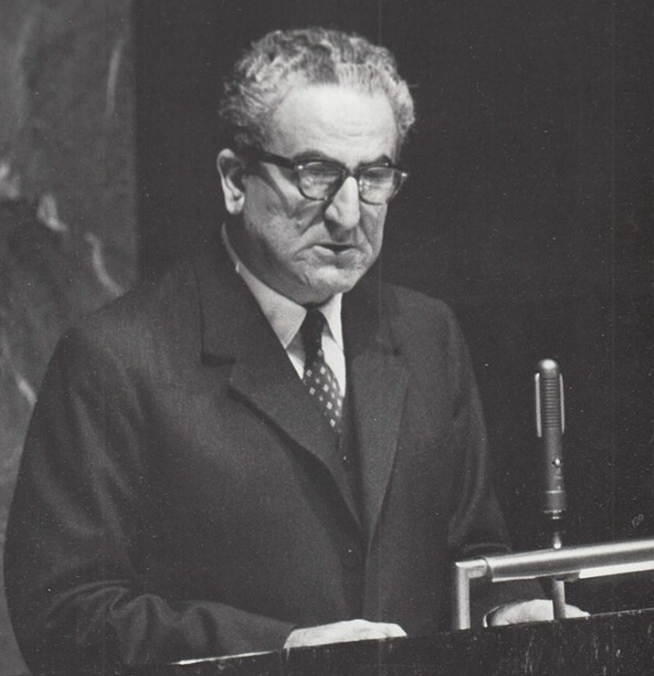
Taking racial elements out of opera
Reading time: 5 minutes.
Avoiding racial stereotypes in opera requires a thoughtful approach. Directors may choose to emphasize universal themes rather than cultural clichés. This means considering the sensibilities of audiences when choosing sets, costumes and developing characters.
Some opera houses rewrite problematic elements in existing works, trying to eliminate certain issues. In 2011, for example, the Canadian Opera Company rewrote the dialogue of Mozart’s Die Entführung aus dem Serail (1782) to remove racist terms. Such rewrites are happening more and more often, new versions are then created that better reflect contemporary values and diverse perspectives. Then you get a more balanced repertoire, with stories that are more inclusive, do justice to different cultures and, in other words, fit better in our postcolonial world.
Inclusiveness in castings
A very different discussion is inclusive casting. It happens that Asian artists, for example, protest because they feel that Asian characters – as in Turandot – are better performed by Asian actors or singers. The fact that these roles are performed by white actors creates a sense of cultural appropriation or exclusion, because actors from the particular community are not given the opportunity to play the role that is rightfully theirs in terms of origin or cultural background. In doing so, they resist not the production itself, but the fact that they are not considered for roles in which their culture or identity is central.
Discrimination in opera
Breaking racial stereotypes in opera begins with choosing diverse performers and avoiding typecasting. An open casting policy creates opportunities for singers of different backgrounds to perform roles traditionally reserved for a specific ethnicity. At the same time, it appears that performers of every skin color enjoy participating in operas set in a (predominantly white) mythology, such as that of Richard Wagner (1813-1883). This has caused controversy in the past, such as in 1983, when African-American soprano Jessye Norman (1945-2019) performed the role of Elisabeth in Bayreuth’s Tannhäuser (1842-1845) interpreted. Conservative Wagner fans grumbled about her casting, believing that an African-American singer did not fit this traditionally white role. Nevertheless, her performance was praised, and it marked a step toward inclusivity in the opera world.
It is strange to note how many people get excited about this, but they are still social discussions that have their importance. I remember the time when women were not allowed to play in the Berliner or Wiener Philharmoniker. Respectively Sergiu Celibidache (1912-1996) and Karl Böhm (1894-1981) were very much against it. It caused much discussion, but progress could not be stopped. In recent years we see more and more female conductors performing, and with that one of the last bastions of paternalism in music has now also fallen.
Dialogue for inclusiveness
Consultation among the many stakeholders, in the art world, but also in the wider society can ensure more accurate and respectful portrayals. Thus, potentially hurtful representations of things or people and offensive stereotypes can be avoided. Turandot is a masterpiece among operas, with powerful music and a dramatic story. Many want to preserve its artistic value. Others oppose it and argue that it may be harmful to continue performing it without addressing these issues. In particular, yellow-facing, in which (white) actors are “repainted” into imaginary Chinese, is seen as degrading.
Instead of canceling, you can reinterpret. Modern productions can focus on universal themes, dress up the setting or use inclusive casting to address concerns. Performing Turandot can prompt education about historical context and the importance of cultural sensitivity. Discussions and panels can accompany performances to provide deeper insights.
Want to read more?
An English-language article on the call for critical rethinking of works of art with controversial representations, such as Puccini’s Turandot: https://www.insidehighered.com/opinion/blogs/higher-ed-gamma/2024/03/18/puccinis-turandot-our-age-cancel-culture. Accessed on 9/11/2024.
Photo: Jessye Norman performs the role of Elisabeth in Tannhäuser (1973). Source: flickr.com. Accessed on 9/11/2024
Recente bijdragen
The UDHR – Charles Habib Malik’s ecumenical vision
Charles Habib Malik’s ecumenical vision Charles Habib Malik (1906-1987) was an influential Lebanese academic, diplomat, philosopher and […]
Back from the road – Florida
Florida Was Wonderful I don’t love America as a power, but I adore Americans. The way they interact with each other—we cold […]
Back from the road – France
I am back again, after spending time away in France. The Loire, with all its magnificent châteaux, left me breathless. There I sat, on a […]
Alle auteurs
- collage
- Advice from the doctor
- African poetry
- AIDS activism and gay emancipation
- Bibliography of Chris
- Bibliography of Olivier
- Biography of Chris
- Biography of Olivier
- Biography of Patrick
- Blogs
- Chris' Stage
- Columns
- Covid
- Dirk van Babylon Newsletter
- Double calling
- Essays
- Hanna's Mind Wanderings
- Incapacity for work
- LEIF doctor
- Liechtensteiner
- Medical newsletter
- Memoirs of a general practitioner
- Miguel Molinos
- Moctines
- Musings
- Myriad
- Practice in Erembodegem
- Resignation
- Sleep problems
- Sprawl Month
- Substance abuse and addiction
- Travel
- Vi to
- Vögels
- Voluntary euthanasia
- Weltschmerz
- Wormwood
- fourth dimension
- Advice from the doctor
- African poetry
- AIDS activism and gay emancipation
- Bibliography of Chris
- Bibliography of Olivier
- Biography of Chris
- Biography of Olivier
- Biography of Patrick
- Blogs
- Chris' Stage
- Columns
- Covid
- Dirk van Babylon Newsletter
- Double calling
- Essays
- Hanna's Mind Wanderings
- Incapacity for work
- LEIF doctor
- Liechtensteiner
- Medical newsletter
- Memoirs of a general practitioner
- Miguel Molinos
- Moctines
- Musings
- Myriad
- Practice in Erembodegem
- Resignation
- Sleep problems
- Sprawl Month
- Substance abuse and addiction
- Travel
- Vi to
- Vögels
- Voluntary euthanasia
- Weltschmerz
- Wormwood
- microfiction
- Advice from the doctor
- African poetry
- AIDS activism and gay emancipation
- Bibliography of Chris
- Bibliography of Olivier
- Biography of Chris
- Biography of Olivier
- Biography of Patrick
- Blogs
- Chris' Stage
- Columns
- Covid
- Dirk van Babylon Newsletter
- Double calling
- Essays
- Hanna's Mind Wanderings
- Incapacity for work
- LEIF doctor
- Liechtensteiner
- Medical newsletter
- Memoirs of a general practitioner
- Miguel Molinos
- Moctines
- Musings
- Myriad
- Practice in Erembodegem
- Resignation
- Sleep problems
- Sprawl Month
- Substance abuse and addiction
- Travel
- Vi to
- Vögels
- Voluntary euthanasia
- Weltschmerz
- Wormwood
- Olivier Lichtenberg
- Advice from the doctor
- African poetry
- AIDS activism and gay emancipation
- Bibliography of Chris
- Bibliography of Olivier
- Biography of Chris
- Biography of Olivier
- Biography of Patrick
- Blogs
- Chris' Stage
- Columns
- Covid
- Dirk van Babylon Newsletter
- Double calling
- Essays
- Hanna's Mind Wanderings
- Incapacity for work
- LEIF doctor
- Liechtensteiner
- Medical newsletter
- Memoirs of a general practitioner
- Miguel Molinos
- Moctines
- Musings
- Myriad
- Practice in Erembodegem
- Resignation
- Sleep problems
- Sprawl Month
- Substance abuse and addiction
- Travel
- Vi to
- Vögels
- Voluntary euthanasia
- Weltschmerz
- Wormwood
- Pasquino
- Advice from the doctor
- African poetry
- AIDS activism and gay emancipation
- Bibliography of Chris
- Bibliography of Olivier
- Biography of Chris
- Biography of Olivier
- Biography of Patrick
- Blogs
- Chris' Stage
- Columns
- Covid
- Dirk van Babylon Newsletter
- Double calling
- Essays
- Hanna's Mind Wanderings
- Incapacity for work
- LEIF doctor
- Liechtensteiner
- Medical newsletter
- Memoirs of a general practitioner
- Miguel Molinos
- Moctines
- Musings
- Myriad
- Practice in Erembodegem
- Resignation
- Sleep problems
- Sprawl Month
- Substance abuse and addiction
- Travel
- Vi to
- Vögels
- Voluntary euthanasia
- Weltschmerz
- Wormwood
- Patrick Bernauw
- Advice from the doctor
- African poetry
- AIDS activism and gay emancipation
- Bibliography of Chris
- Bibliography of Olivier
- Biography of Chris
- Biography of Olivier
- Biography of Patrick
- Blogs
- Chris' Stage
- Columns
- Covid
- Dirk van Babylon Newsletter
- Double calling
- Essays
- Hanna's Mind Wanderings
- Incapacity for work
- LEIF doctor
- Liechtensteiner
- Medical newsletter
- Memoirs of a general practitioner
- Miguel Molinos
- Moctines
- Musings
- Myriad
- Practice in Erembodegem
- Resignation
- Sleep problems
- Sprawl Month
- Substance abuse and addiction
- Travel
- Vi to
- Vögels
- Voluntary euthanasia
- Weltschmerz
- Wormwood
- stiftgedicht
- Advice from the doctor
- African poetry
- AIDS activism and gay emancipation
- Bibliography of Chris
- Bibliography of Olivier
- Biography of Chris
- Biography of Olivier
- Biography of Patrick
- Blogs
- Chris' Stage
- Columns
- Covid
- Dirk van Babylon Newsletter
- Double calling
- Essays
- Hanna's Mind Wanderings
- Incapacity for work
- LEIF doctor
- Liechtensteiner
- Medical newsletter
- Memoirs of a general practitioner
- Miguel Molinos
- Moctines
- Musings
- Myriad
- Practice in Erembodegem
- Resignation
- Sleep problems
- Sprawl Month
- Substance abuse and addiction
- Travel
- Vi to
- Vögels
- Voluntary euthanasia
- Weltschmerz
- Wormwood
Over de auteur
Andere werken van onze auteurs
- August 2025 (1)
- July 2025 (2)
- March 2025 (3)
- December 2024 (10)
- November 2024 (6)
- October 2024 (3)




Er is nog geen commentaar geplaatst!